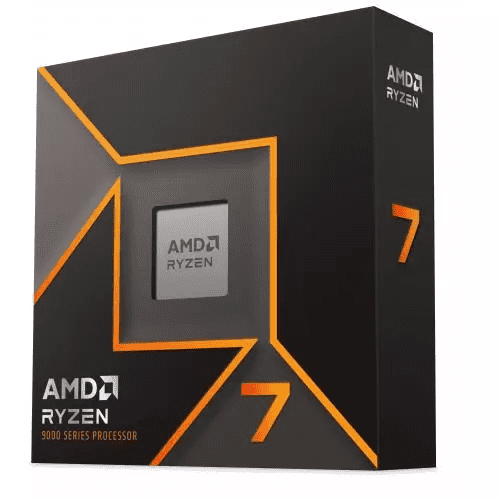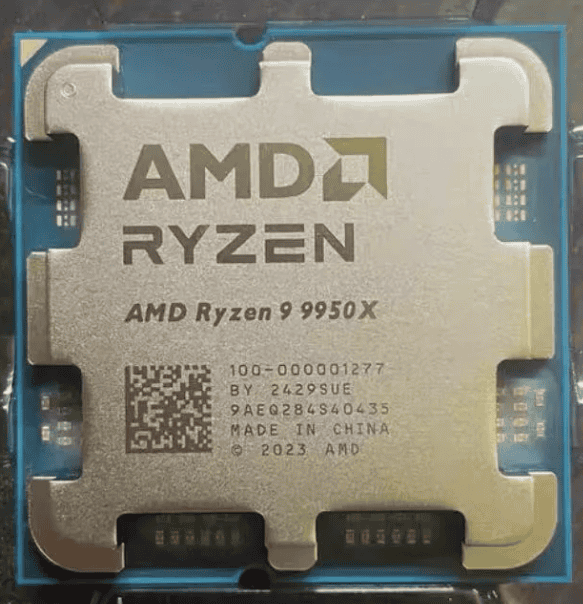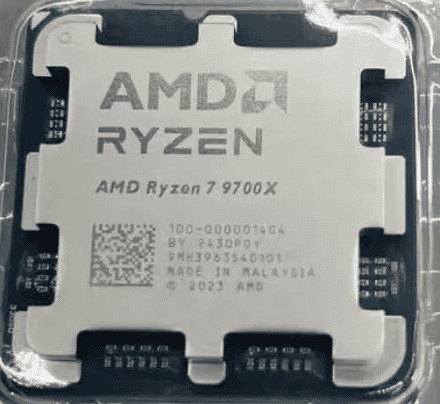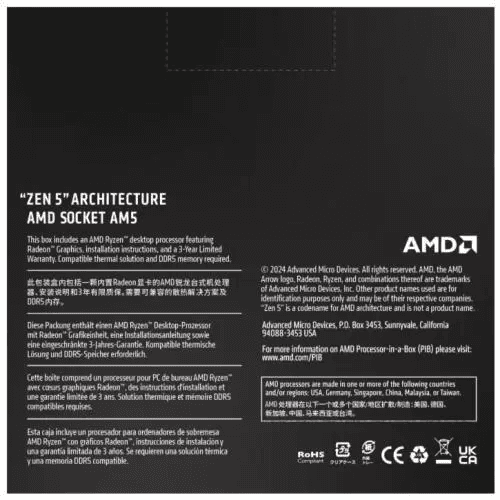AMD’s Ryzen 9000 series CPUs mark a significant leap in processor technology. These new chips, based on the Zen 5 microarchitecture, bring impressive performance gains to desktop computers. The Ryzen 9000 series CPUs do have an integrated GPU, but it’s very basic and mainly for outputting to a second monitor. The GPU built into the 9000 series of processors is by no means capable of handling the requirements of modern gaming.
This design choice allows AMD to focus on raw CPU power. The lack of a highly capable integrated GPU means users need a separate graphics card for visual output. Gamers and professionals who require high-end graphics often prefer this setup anyway.
The Ryzen 9000 lineup offers various models with different core counts and clock speeds. These processors aim to deliver top-tier performance for demanding tasks like video editing, 3D rendering, and gaming. Their efficiency improvements also help reduce power consumption compared to previous generations.

Integrated Graphics in Ryzen 9000 Series: What You Need to Know
Most CPUs in the Ryzen 9000 series do have integrated graphics. However, there’s a catch. These integrated GPUs are not designed for serious gaming. They are intended for basic tasks like displaying video and simple 2D applications.
What Are Integrated Graphics?
Integrated graphics, also known as iGPUs, are graphics processing units that are built into the CPU itself. This differs from dedicated graphics cards, which are separate components. Integrated graphics share system memory (RAM) with the CPU, while dedicated graphics cards have their own dedicated memory.
Ryzen 9000 Series and Integrated GPUs

Most Ryzen 9000 series CPUs come with integrated Radeon Graphics. These are basic GPUs meant for essential display functions and light tasks. You can use them for:
- Watching videos: Enjoy smooth playback of high-definition videos.
- Browsing the web: Experience seamless web browsing with no lag.
- Office productivity: Handle everyday office tasks with ease.
- Very light gaming: Play older or less demanding games at low settings.
Why Ryzen 9000 iGPUs Are Not Ideal for Gaming
The integrated GPUs in Ryzen 9000 series processors are not powerful enough for modern AAA gaming. They lack the processing power and dedicated memory found in discrete graphics cards. If you try to play demanding games, you’ll likely experience:
- Low frame rates: Games will feel choppy and unresponsive.
- Poor visual quality: You’ll have to lower graphics settings significantly.
- Stuttering and lag: Gameplay will be disrupted by frequent pauses and delays.
When You Need a Dedicated Graphics Card
If you plan on playing any modern games, you’ll need a dedicated graphics card. This is especially true for:
- AAA titles: Games with high-fidelity graphics and complex effects.
- High resolutions: Gaming at 1440p or 4K resolution.
- High refresh rates: Gaming at 120Hz or higher for smoother motion.
Do all Ryzen 9000 CPUs have integrated graphics?
Not all CPUs in the Ryzen 9000 series have integrated graphics. CPUs with model numbers ending in “X,” like the Ryzen 9 9900X, typically lack an iGPU. These processors are designed for performance enthusiasts who will be using a dedicated graphics card. Always check the specifications of a specific CPU model before purchasing to confirm if it includes integrated graphics.

| Feature | Ryzen 9000 iGPU | Dedicated Graphics Card |
|---|---|---|
| Graphics Processing | Integrated into the CPU | Separate component |
| Memory | Shared with system RAM | Dedicated video memory (VRAM) |
| Performance | Basic, suitable for everyday tasks | Significantly more powerful |
| Gaming Capabilities | Limited to older or less demanding games | Handles modern AAA games with ease |
| Power Consumption | Lower | Higher |
| Cost | Included with the CPU | Additional cost |

Key Takeaways
- Ryzen 9000 series CPUs use the new Zen 5 architecture
- These processors require a separate graphics card
- AMD focuses on CPU performance and efficiency with this design
Exploring the Ryzen 9000 Series CPU Features
AMD’s Ryzen 9000 series processors bring major upgrades to the table. These chips offer improved performance and efficiency thanks to the new Zen 5 architecture.
CPU Specifications and Microarchitecture
The Ryzen 9000 series uses AMD’s Zen 5 architecture. This design boosts instructions per cycle (IPC) and clock speeds. The top model, the Ryzen 9 9950X, has 16 cores and 32 threads. It can reach speeds up to 5.7 GHz.
Zen 5 cores use a more advanced N4P node. This allows for higher transistor density. The new design also increases L2 cache size.
AMD focused on power efficiency with this generation. Many Ryzen 9000 chips have a 65W TDP. This is much lower than some rival processors.
Integrated Graphics in Ryzen 9000 CPUs
Most Ryzen 9000 processors come with built-in graphics. These chips use RDNA 2 architecture for the integrated GPU. This offers solid performance for basic gaming and video tasks.
The exact graphics power varies by model. Higher-end chips tend to have stronger integrated GPUs. For serious gaming, a dedicated graphics card is still recommended.
AMD also added new AI features. The Ryzen AI 300 series helps with tasks like video editing and photo enhancement.
Compatibility and Integration
Ryzen 9000 CPUs use the AM5 socket. This means they work with AM5 motherboards. These boards support modern features like PCIe 5.0 and DDR5 memory.
Users can choose from different chipsets. Options include X670, X670E, and B650E. Each offers various levels of features and performance.
The AM5 platform is designed for long-term use. It should support future AMD processors too. This gives users a clear upgrade path for years to come.







